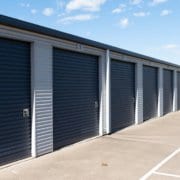Public Spaces and CRE: Are All-Inclusive Urban Hubs the Future?
A relatively new trend in CRE is gaining in popularity as the rising desire for walkability and entertainment transforms how people want to work, live, and play. Urban hubs are combining these three factors into one centralized location, creating new and localized communities.
A hub is the effective center of an activity, region, or network. An urban hub has traditionally been a center of commerce, containing shopping and entertainment, with office spaces often located closest to the city’s core and residential spaces spreading outward from the center. In the 1950s, a push toward suburban life brought about the new norms of a potentially lengthy daily commute and the need to travel in order to access dining, entertainment, and other social activities.
Now, the suburban trend may be reversing. Both Millennials and Baby Boomers cite walkability and access to entertainment as important residential considerations, and the co-working sensation has changed the modern concept of the office. Additionally, the popularity of experience-based shopping and dining has created new social environments, such as food halls and retail theaters.
So, will these live-work-play hubs become the future of social organization? Read on to learn more about these urban islands, how they appeal to residents, and why they matter for CRE professionals.
What Types of Properties are in an Urban Hub?
What properties make up an urban hub and how is it different from other social or residential centers? There are several key components to look out for.
Multifamily Residential
An urban hub requires centralized housing. Multifamily housing is necessary because these hubs are characterized by their walkability, meaning that people must live close enough to walk to surrounding businesses. Housing in these areas can also be combined with office or retail offerings, generally located on the ground floor. In some cases, residents do not even have to leave the building to access dining and entertainment.
Office Spaces
Typically, the people who reside in urban centers also work in the same immediate area. While some employees undoubtedly still commute, many choose housing to be near work, bolstering both markets and driving profitability. The benefit of an all-inclusive space involves residents earning an income and then expending capital in the same geographic location. As such, urban hubs will typically have some type of office space.
Food Halls
Fifty-five percent of Millennials prefer to eat at communal tables when they dine out, and 44% of their food expenditures are from dining. This generation seeks out unique food experiences to enjoy with friends. Food halls are appealing because they tend to offer artisanal or gourmet dining options that reflect the local culture. Many food halls also accommodate live entertainment, enabling them to function as social hubs as well as restaurants. Urban hubs must contain dining options to be all-inclusive, and many contain food halls due to their communal, experiential nature.
Retail Theaters
A retail theater is any retail space designed to turn the act of shopping into a memorable, unique experience. Shopping malls and other retail spaces used to be social hubs, but with so many options available now, retailers have been stepping up their game to continue bringing customers in to brick-and-mortar locations. Shops that offer products and experiences together are more popular, like BYOB painting studios for instance, and build a sense of community. Retail theaters in urban hubs make it possible to shop and engage in entertainment without leaving the immediate area.
Why are People Drawn to Urban Hubs?
There are several reasons people gravitate toward urban hubs. First, there is minimal travel required to sustain daily life. Residents can quickly and easily access all of the wants and needs that make up their routines. In the process, they also save time. For example, a person who drives twenty minutes to reach a theater, then drives another ten to get to a restaurant, and finally commutes back home has spent up to 60 minutes in transit. That hour could have been spent enjoying the company of friends or on a prolonged, relaxing meal.
Further, urban hubs create a sense of community. Many people yearn for face-to-face interactions that seem to have been lost due to the popularity of social media. Living, working, and playing in close proximity with the same people encourages more in-person engagement, which is proven to have a positive effect on mental health.
What CRE Professionals Should Know
Urban hubs could usher in new CRE opportunities as the lines are increasingly blurred between traditional business, residential, and entertainment districts. A lack of such clearly defined spaces could mean more adaptive reuse development and an ability to create diverse offerings in previously oversaturated markets. If your niche falls outside of a specific asset class, an urban hub makes it possible to break in to previously inaccessible geographic areas because there is demand for diverse types of spaces.
Additionally, the sense of community within these hubs means that many tenants will be around for the long haul. People form connections with businesses and other residents, which could aid in maintaining higher occupancy rates as these self-sustaining pockets support themselves. Where there are people and capital, businesses thrive, leading to better retail occupancy. These hubs also form their own cultures and personality, attracting outsiders who want to experience the feel of the district and bring with them additional capital that aids profitability.
According to GlobeSt, people want amenities and entertainment close by, a shorter commute time, high-density living options, and employment opportunities with proximity to where they live. Urban hubs deliver the entire wish list. This trend is certainly one to watch as it develops further and possibly restructures many aspects of people’s lives.
For more information on current CRE trends, download our free eBook: 20 Trends That Will Shape Commercial Real Estate in 2019!











